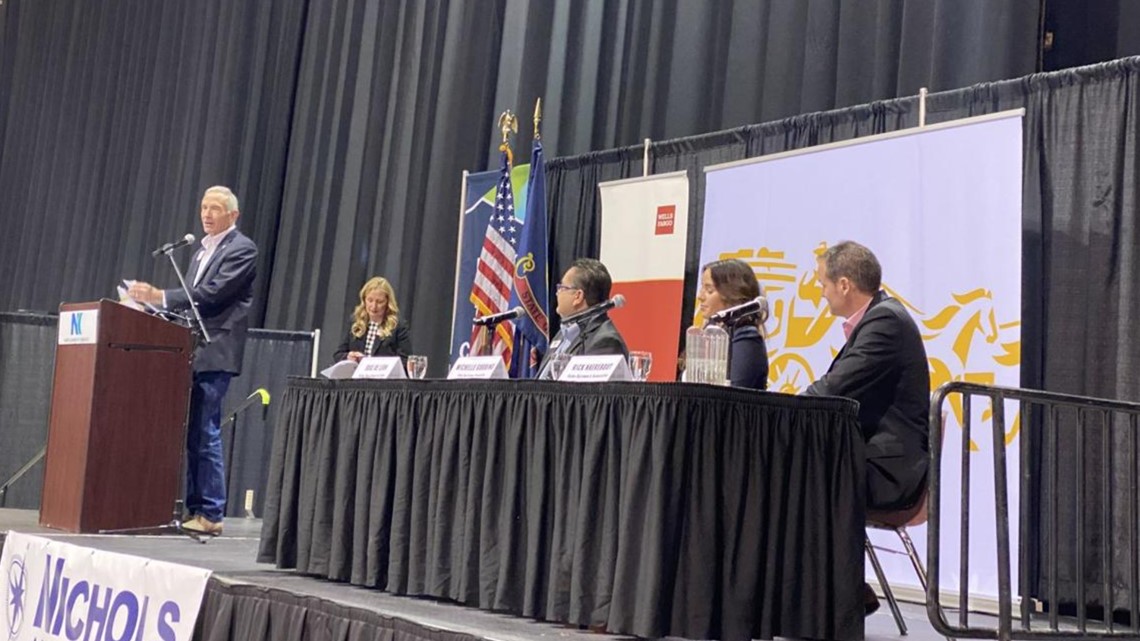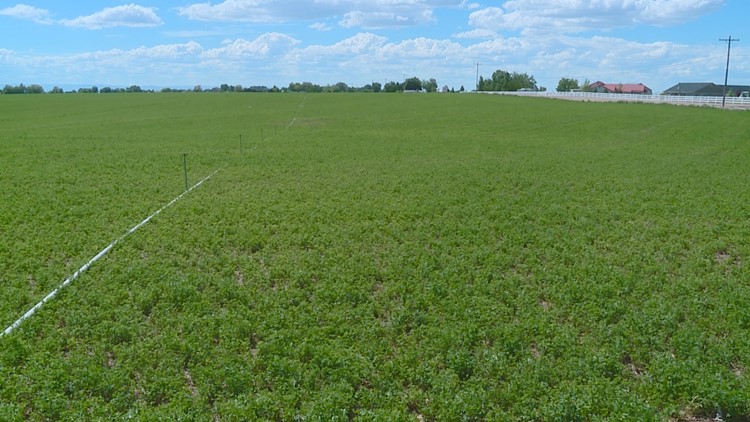NAMPA, Idaho — With a state unemployment rate under 3%, more Idaho farmers are utilizing the H-2A Temporary Agricultural Workers program.
In Canyon County alone, the Idaho Press reports farmers employed around 1,100 H-2A workers last year, up from about 30 in 2014, according to the Idaho Department of Labor.
The H-2A Temporary Agriculture Workers program, which allows employers to bring in workers from outside the U.S. to fill seasonal agriculture jobs, was the topic of the Nampa Chamber of Commerce Agriculture Forum in Nampa on Tuesday.
In a panel discussion between Jose DeLeon, senior workforce consultant with the Idaho Department of Labor, Michelle Gooding, president of the Idaho Hop Growers Association, and Rick Naerebout, CEO of the Idaho Dariymen's Association, panelists addressed questions about the H-2A program and Naerebout talked about his role in an approved House Bill that would expand the H-2A program.


"There are 2.4 million agriculture workers in the U.S., and if you go the Department of Labor, statistics show 46% of them are here without status," Naerebout said. "That is half of every plate of food that you consume, that is brought to you by an undocumented worker. That is a staggering number that we have over 1 million workers here in agriculture without status. As a country we are that dependent on this workforce and these individuals."
Katie Hebdon, the Nampa FFA Chapter president, and winner of the FFA student speech competition, gave a speech to the crowd, where she echoed Naerebout, saying that in Idaho, about 40% of Idaho's the agriculture labor force consists of immigrants, regardless of status.


US RESIDENTS AND AG JOBS
DeLeon addressed the common concern around hiring workers from outside the U.S., that it takes jobs away from Americans who need them. He said the Department of Labor had only five applications from U.S. residents for the more than 1,000 agriculture jobs posted last year.
"There is no way you could fill those positions without the H-2A program," he said.
Gooding, who grows hops on a farm between Parma and Wilder, said her farm uses H-2A workers to "fill a void on the farm."
Gooding said in Idaho, there are around 8,300 acres of hops, that mostly are harvested by H-2A program workers.
"There are a few smaller farms that don't use the program, but majority do. Without the program, it would be catastrophic," Gooding said.
She said that the quality of product would decrease because hops must be harvested within a certain time frame. She said last year, with H-2A workers, her 1,000-acre hop farm had 20% increase in production and cut five days off of the harvest.
Naerebout said the average dairyman, who is not eligible to participate in the H-2A program, is short 10% of his workforce.
"They are scrambling, getting creative, asking workers to work extra shifts," Naerebout said. "They are not in a position where they are comfortable with their workforce in the field."
UNDOCUMENTED WORKERS PAY PAYROLL TAXES
Narerebout addressed another common talking point in the national immigration debate around how undocumented immigrant workers are taxed.
He said that farmers and ranchers who employ H-2A workers do not know who is documented and who is not.
"Nearly every dairyman I know uses QuickBooks and is paying payroll tax," he said. "There is no cash paid under the table."
He said if Idaho dairies employ 4,000 undocumented workers, out of 8,000 total workers, that is about $22 million paid under Federal Insurance Contributions Act by Idaho's dairymen and their dairy employees.
Undocumented workers often use fake Social Security numbers that do not match their names, but the fake numbers are good for paying taxes, so the Social Security Administration collects their taxes, but the workers will likely never touch their Social Security contributions.
"I am pretty sure we are starting to figure out how that Social Security system is working right now and how it hasn't gone bankrupt," Naerebout said.
FARM WORKFORCE MODERNIZATION ACT
In December, the U.S. House of Representatives passed the Farm Workforce Modernization Act, that would provide undocumented agricultural workers a path to legal status and would allow dairymen to utilize H-2A program workers.
The reason why dairies are not eligible for the worker program, is because they are a year-round operation and the current program applies to seasonal agriculture work.
The bill, that Idaho GOP Rep. Mike Simpson has championed, would open dairies up to the program and allow eligible immigrant workers an eventual path to legal permanent residency in the U.S. It also would ensure employers use the federal government’s E-Verify system to confirm workers’ legal eligibility.
The Idaho Dairymen's Association has been a vocal sponsor of the bill, though Naerebout said its leaders are waiting until after the primary election when some Senate seats are up for reelection.
"It has to be a bipartisan bill, we need to get both Republicans and Democrats signing onto this bill," he said, adding that he is expecting it to be a challenge.
More from our partner Idaho Press: State Hospital West to open in Nampa in 2021
Watch more 'Growing Idaho':
See them all in our YouTube playlist:



